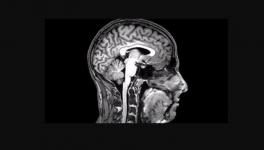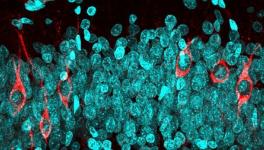Brain Performs A Clever Trick During Long-term Memory Formation

Image Courtesy : brainhq.com
Certain memories can be retained for lifetime, but certain memories wither away instantly. Although, how memories are stored in the brain and where exactly in the brain these are stored are two questions that still await more confirmatory evidences. Neuroscientists worldwide have been probing these questions by applying various means of experimentation and theoretical paradigms.
A recent paper published in Science throws some light in this regard. The report suggests that for the formation of strong and stable memory, the brain plays out very cleverly. The most important cells of the brain, the neurons, collectively carry out the task of strong and long term memories. The research found that for a strong and stable memory, neurons team up and all of them fire synchronously and provide redundancy so that these memories persist over time. The findings also have implications in understanding how memories may be impaired in case of brain damage as in the case of strokes or Alzheimer’s disease.
The team developed an experiment where they could examine the neural activity of the mouse brain while it learns something. In the experiment, mice were placed in a straight enclosure about 5 feet long with white walls. Along the walls of the enclosure, there were unique symbols that marked different locations – a bold plus sign near the right most end and an angled slash near the centre. Sugar water was placed at either end of the track. The mice was exposed to explore the enclosure and find the sugar water. While the mice explored, the researchers recorded the activities of specific neurons in the hippocampus. Notably, hippocampus is the region in the brain where new memories are formed.
At the first instance, when the mice were moving left and right, and were unable to find the sugar water, the hippocampus recording revealed that only few neurons were activated and that too when the mice took notice of a symbol on the wall of the enclosure. As the mouse became more familiar with the environment of the enclosure, more and more neurons were found to be activated in synchrony by seeing each symbol on the walls. This indicates that the mouse was recognising its position with respect to the unique symbols. Hence, it is indicative that for the formation of a strong and stable memory neurons need to team up and fire (function) in synchrony. In other words, the brain recruits a good number of neurons and teams them up and makes them function in synchrony. This is indeed a clever trick played by the brain.
Now, to study how memories fade away, the researchers withdrew the mice from the enclosure for upto 20 days. After this detachment, when they were brought back to the enclosure, the researchers found that those mice that had formed strong memories encoded by higher numbers of neurons remembered the task quickly. Also, they found that even when some neurons showed different activities, the mouse’s memory was clearly identifiable when the activity of large group of neurons was analysed. In other words, we can say that when group of neurons are involved in a memory event, even if some neurons fail or damage over time, the memory could be retracted easily.
"Imagine you have a long and complicated story to tell. In order to preserve the story, you could tell it to five of your friends and then occasionally get together with all of them to re-tell the story and help each other fill in any gaps that an individual had forgotten. Additionally, each time you re-tell the story, you could bring new friends to learn and therefore help preserve it and strengthen the memory. In an analogous way, your own neurons help each other out to encode memories that will persist over time”—explains Walter Gonzalez, the first author of the study.
Memory is very fundamental to our existence. Impairment of it, as in the case of Alzheimer’s disease, or during the old age could lead to severe consequences. Finding the neural mechanism of memory is pertinent to fight back memory loss.
The current findings also shed new light on the conventional ideas about memory. In the words of Carlos Lois, the corresponding author of the paper, “For years, people have known that the more you practice an action, the better chance that you will remember it later. We now think that this is likely, because the more you practice an action, the higher the number of neurons that are encoding the action. The conventional theories about memory storage postulate that making a memory more stable requires the strengthening of the connections to an individual neuron. Our results suggest that increasing the number of neurons that encode the same memory enables the memory to persist for longer."
Get the latest reports & analysis with people's perspective on Protests, movements & deep analytical videos, discussions of the current affairs in your Telegram app. Subscribe to NewsClick's Telegram channel & get Real-Time updates on stories, as they get published on our website.

















